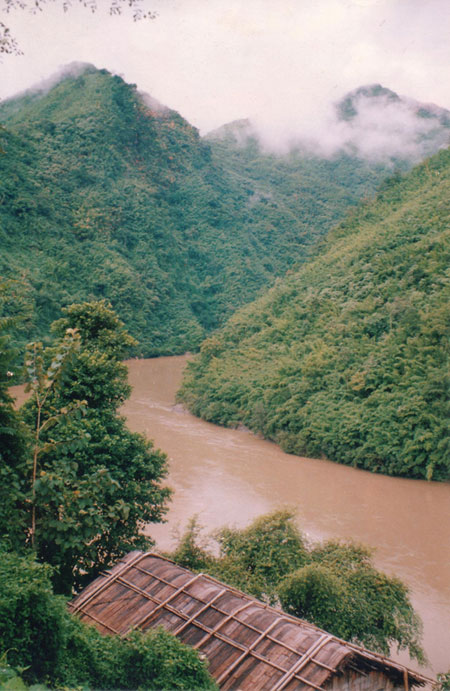By Venkata Vemuri
DHAKA, Bangladesh – In something of a David and Goliath story, India has decided to build a hydro-electric dam and a huge reservoir on the Barak River as it flows into much smaller Bangladesh.
Opposition to the project has been growing in Bangladesh because of concern that the country’s share of the Barak’s water will be reduced and that it will be damaged economically and ecologically. Thousands of people living near the project in northeastern India have also been protesting, saying their homes will be flooded as the reservoir is created.
But the project may well go ahead. India seems determined and the prime minister of Bangladesh, Sheikh Hasina, has said she believes she can negotiate acceptable terms for her country.
Prime Minister Hasina says she has been assured by Manmohan Singh, the prime minister of India, that India “would not do anything harmful to Bangladesh and that the next steps would be taken on the basis of an understanding between the two countries.”
India says the dam project, 120 miles east of the Bangladesh-India border near the town of Tipaimukh, will increase the supply of electricity and help control seasonal flooding, and that it will not harm Bangladesh. Some reports suggest that Bangladesh may receive electricity from the Indian dam.
The project was first proposed in the 1950s as an aid in controlling seasonal flooding, but has been postponed several times. India’s government approved the project in 2003. Pre-construction work began about a year ago. Bangladesh, with a population of about 150 million, is surrounded on three sides by India, with more than a billion people, and faces the Bay of Bengal. It shares a relatively short stretch of border with Myanmar.
Opponents compare the dam project with India’s building of the Farakka Barrage on the Ganges River which, like the Barak, is shared by the two countries. In 1975, after years of objections from people in Bangladesh, the Bangladesh government agreed to a trial run of the Farakka Barrage. Once the water began flowing, India extended the trial and the power plant is still operating.
Critics in Bangladesh say their country now receives less water from the Ganges and that farming, fishing and logging have suffered. “The entire southwestern region of Bangladesh was affected,” said Mohiuddin Alamgir, a Bangladesh political leader and former official of the United Nation’s International Fund for Agricultural Development in Rome, in an article for the Bangladesh research center, BanglaPraxis. India contends that the Farakka Barrage has done no harm to Bangladesh.
An American Swimmer Protesting By Stroking Through Polluted Waters
MARBLEHEAD, Mass – Christopher Swain says he wants his daughters to grow up in a healthy world where there is an abundance of clean water. He has been drawing attention to the lack of clean water by carrying out marathon swims through canals, rivers and even parts of oceans that have been polluted with factory sludge, shipping pollution and sewage.
After stroking the entire length of the polluted Columbia, Charles and Hudson rivers, Swain decided his next venture would be a 1,000-mile swim in the coastal Atlantic waters from Marblehead to Washington, D.C. He began the ocean swim in the spring of 2009 and says he expects the journey to take about 200 days.
Swain said that during breaks in the ocean swim, he planned to work with teachers and students in more than 2,000 classrooms along the eastern seaboard on projects designed to improve the health of waterways. His idea, he said, was to provide his daughters and the school children he meets, “the tools they’ll need to begin solving the staggering challenges facing their generation” in regard to the environment.
Swain, an environmental educator based in Massachusetts, was the first person to swim the entire length of several dirty waterways including the Columbia River, the Charles River, the Hudson River, and Lake Champlain—all in support of clean water.
He is also on a mission to rid the world’s waters of toxic chemicals from discarded electronic devices. “High levels of heavy metals and dangerous chemicals aren’t just affecting human health,” he says. “They are affecting ocean life as well: dolphins and whales routinely show dangerous levels of man-made toxics.”
As he swims, Swain logs the acidity of the water on a Google map and urges students to follow along. “One day, these kids will grow up, and they’re going to vote and run companies and staff government agencies,” he says. “I hope at that point that they’ve found pieces of the natural world that moved them. We tend to protect the people and the places that we care about and that we’re invested in.” #

